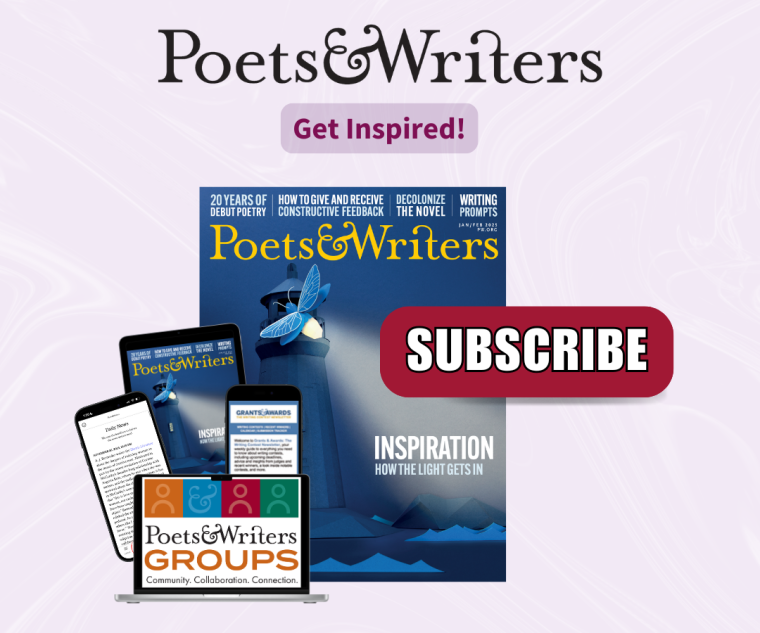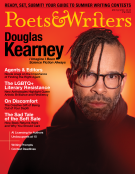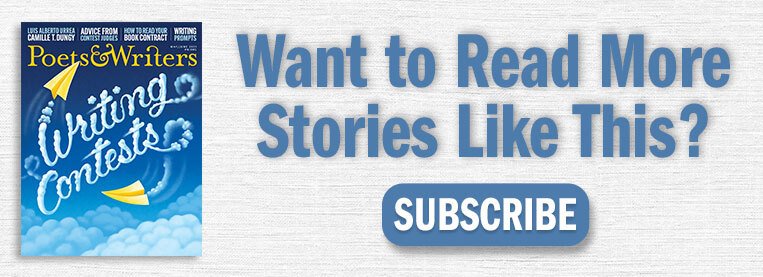Many writing opportunities, including grants, residencies, and prizes, ask for an artist statement to accompany your writing project description and work sample. This statement offers an entry point to the creative work and reflects careful thinking about your writing practice. But whether you are at the beginning or far along on your writing journey, writing about your writing can feel like an impossible task.
Often we want to hold a boundary between our writing and any sort of explanation. Sharing ideas about your writing can seem reductive and counterintuitive. We hope our work speaks for itself, and perhaps being asked for a reflection presents a struggle. How does one summarize work that took years to write over various life changes that one may or may not be writing about or be comfortable disclosing? It can feel daunting, even overwhelming.
But developing an artist statement can also be a gift to our creative practice and our creative being. The artist statement is a space to honor who you are and why your writing is important to you. It is your now and aspirational future, an evolving document. As a companion to the creative work, we can see this text as a friend.
The artist statement enables you to share who you are as a writer, your motivation, and influences, using the first-person point of view. The panel of reviewers reading your application is often judging submissions with all identifying information removed, relying on this statement to get to know you. The power of the artist statement is illumination, bringing light to each writer’s unique voice and passion. By giving reviewers insight into why you are compelled to write, they have context, a lens to help them intellectually and emotionally engage with your work sample, which is a fragment of a larger project. This allows them to better assess and recommend writers for the opportunity at stake.
With many writers applying for an array of opportunities, you will want to allow enough time to write and refine your artist statement to tailor it to the opportunity and your proposed writing project. The statement is part of an application process in which reviewers are reading dozens and perhaps hundreds of applications. Demonstrating thoughtful consideration of who you are as a writer shows reviewers that you are serious about your writing and have the self-motivation and maturity to see the project through if given the fellowship, grant, or residency—a significant investment of the organization’s time and finances.
Here then is some guidance as you begin the process of drafting your statement:
Schedule time and create a comfortable space. Eat your favorite snack with your preferred beverage. Take breaks as you go, getting fresh air outside. Let this be a meditative, gentle process.
Read your work as a reader. Note what patterns you see, what themes emerge, what elements of style and craft stand out.
Reflect on your work as the writer. Think back on the process of writing the work and your craft concerns and artistic influences at the time. Compare the samples (e.g., multiple poems, essays, or stories) in relation to one another. If your artist statement accompanies a project description, reflect on how these work samples are seeds for the larger proposed writing project. Take it one step further and imagine the completed work. If that completed work will be a book, what is your book jacket description? What would your dream blurbs express?
Freewrite for five to ten minutes for any prompts or questions your application form includes. Or consider using your phone’s voice memo app or having someone interview you about these questions and record what you say. Transcribe, write, and revise.
Consider the following questions to prompt reflection on your work. (Some of these questions are versions of application questions from Creative Capital and Hedgebrook, organizations whose offerings to writers include grants and residencies, respectively.)
What are your main artistic influences? Who are you in conversation with—which writers, communities, scholars, artists, and so on? What books, works of art, aesthetic movements, and fields of knowledge?
How has your background, lived experience, and education made you the writer you are today?
What (or who) motivates you to write? Who are you writing for? Example: “I write out of…”
What are your burning questions? What are the issues, ideas, and subjects that inspire your creative process? Examples: “I am meditating on…” or “My writing exists at the intersection of [topic 1] and [topic 2].”
What is your motivation behind exploring your topic? What sets your writing and your goals apart from others who are writing about the same topic? Examples: “My goal as a writer is…” or “I am writing to reach…”
Detail your process. How are you writing the work you want to see in the world? Examples: “My writing reflects…” or “My poems engage with…”
Craft your statement with precision and passion, with clarity and aspirational power. Experiment with rhythms, syntax, and word choice. Your goal is to immediately attract the reviewer’s attention and make them curious to read your writing sample. Read your statement out loud and remember to write conversationally, not with academic language. Depending on the opportunity, your statement may be read by writers, editors, arts administrators, or others, all of whom may or may not be scholars.
As you think through who you are as a writer and what you are writing about, take your time. Feel all of your feelings. Take breaks. Notice where you are experiencing unease or discomfort—what is difficult to say or needs time to surface.
A note regarding self-care: Finding the language for what you hope to do with your writing, your desires and concerns, while reflecting on your writing—itself born out of emotional, transformative experience—involves a lot of heartwork and trust. Detailing added context around your writing—whether this be sharing a book’s significant themes or related history, or your creative practice and lived experience—is vulnerable work, particularly for those writers who have struggled to find mentorship and support and those who have experienced systemic oppression. Sharing it with others can be a delicate proposition. Be gentle with yourself, and create a circle of trust with writers and non-writers to help provide feedback and support as you draft and revise. There may be a version of the artist statement that is private and personal and another version that you share in the submitted application. Consider how your heartwork can bring soft power to your statement.
Also: Collect favorite artist statements for inspiration and template models. You can find them online (look on writers’ websites or on the sites of organizations like Creative Capital and Headlands Center for the Arts) and in artist spaces like galleries.
As application word counts tend to vary, write the longest version of the artist statement to keep as a template, editing down and customizing for each unique opportunity. Your statement will evolve as you grow as a writer. Keep track of your statements as a record of your artistic journey.
Writing about your writing is a celebration of who you are as a writer, what you have deeply thought about and sincerely believe. Spending time with your work and completing even a single artist statement will help clarify your vision and your writing goals. You are creating a map, illuminated by the artist statement. Keep writing toward your burning questions and see the work through.
Shelley Wong is a poet and the author of As She Appears (YesYes Books, 2022), which was longlisted for a National Book Award and a winner of a Lambda Literary Award. She has received fellowships and residencies from MacDowell, Hedgebrook, Headlands Center for the Arts, and Montalvo Arts Center.
Thumbnail credit: Margarita Corporan







